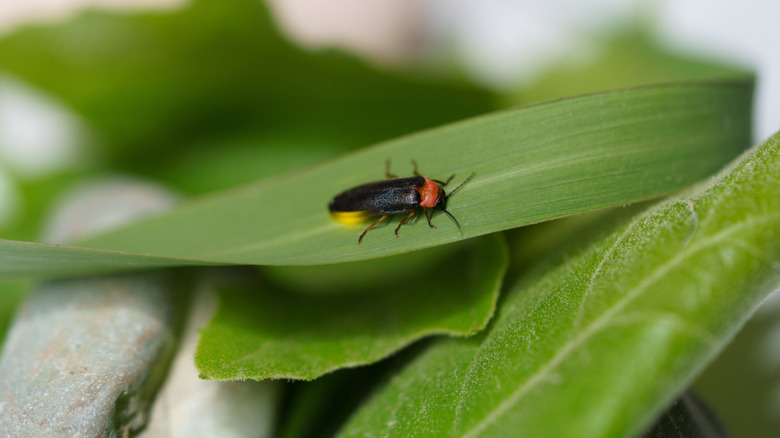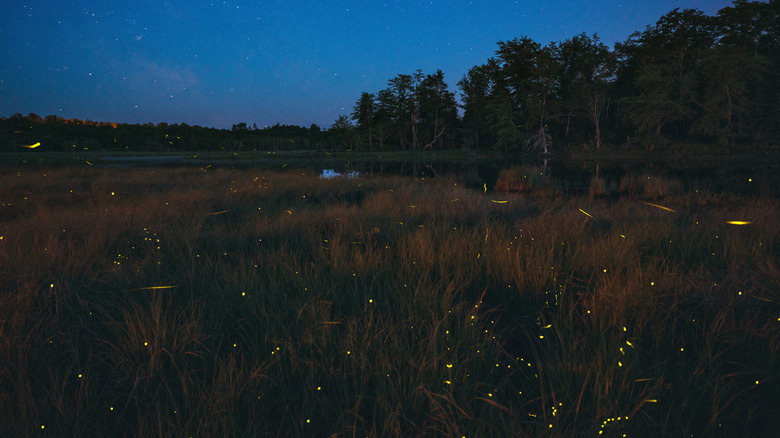The Popular Lawn Care Task That Is Keeping Fireflies Far Away From Your Yard
Firefly sightings are often considered synonymous with warm summer nights in areas east of the Great Plains region in the United States. Also called lightning bugs, these "flies" are technically nocturnal beetles that are less than an inch long. While they hang out in foliage during the daytime hours, they tend to fly around after sunset and through midnight as they emit yellow, red, or orange lights from underneath their abdomens, caused by bioluminescence. Interestingly, some areas across the country have reported an influx in firefly numbers, which is welcome news amid the overall decline of the species. If you live in a region where fireflies live but are not seeing them at night, it turns out that mowing your lawn might be driving these beetles away.
Fireflies are attracted to tall grasses because the greenery offers a safe space to rest during the daytime hours. As night rolls around, they may then fly around the area and show off their lights. If your lawn has shorter grass, the fireflies may be less likely to hang out there during the day. Instead of skipping out on mowing in order to see more fireflies though, you might consider other ways to support these nocturnal beetles while following the 1/3 rule to keep your lawn stress free all year.
How you can support fireflies while still mowing your lawn
While some regions reported more fireflies in 2025 due to above-average rainfall, the overall population is still decreasing. Aside from providing entertainment after dusk, fireflies are critical insects to natural ecosystems. In particular, firefly larvae (also known as "glowworms") control snail and slug populations as well as the parasites that these creatures sometimes transmit to humans. The larvae's preference for snails and slugs may reduce their numbers in your home garden, too.
Despite all the benefits of fireflies, it's understandable if you don't want to forego mowing your lawn. Maintaining your lawn is essential for healthy green grass and can also naturally manage certain pests, such as fleas and ticks. Plus, letting your grass go does not necessarily guarantee that fireflies will come to your lawn. Instead, you might try other ways to ensure a firefly-friendly yard. Experts recommend reducing unnecessary chemicals like insecticides around your yard that might harm fireflies and leaving overhanging trees as places where the beetles may rest. You might also limit the number of outdoor lights you have on your property — not only will this help you see the fireflies work their magic at night, but artificial lighting is thought to interfere with firefly communication overall. Another option is to plant ornamental grasses, large shrubs, and fast-growing flowers that may fill your yard with dazzling fireflies by providing shelter.

